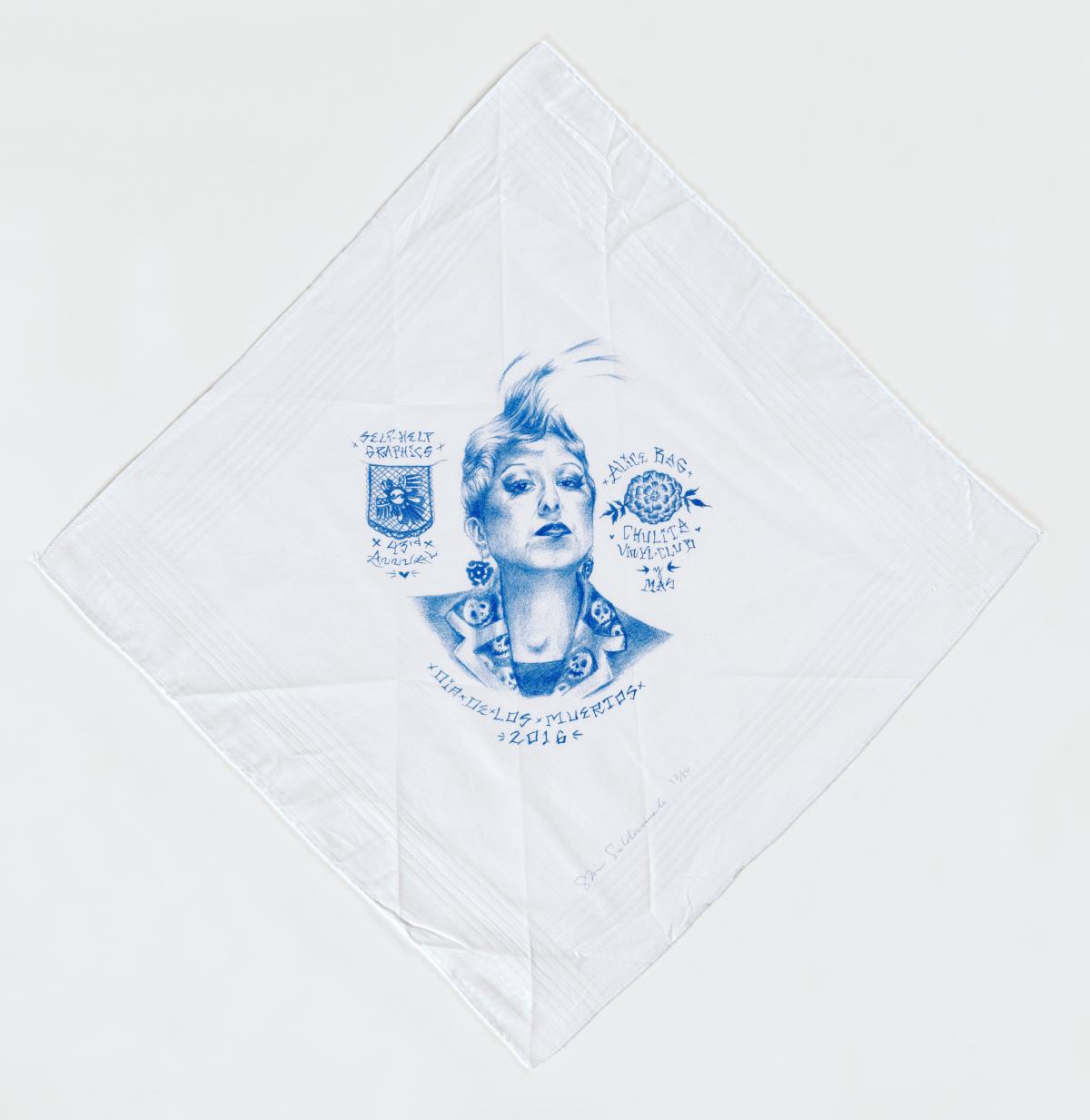
Throughout her career, Shizu Saldamando has used portraiture to assert agency and reclaim representation for her subjects. Depicting friends and artists she has met at dance clubs, music shows, and art scenes, Saldamando’s exploration of youth subculture in Southern California seeks to elevate everyday people who are often overlooked. Saldamando also draws inspiration from her own Chicano and Asian heritage. By representing people on the fringes of society, whose existence Saldamando sees as the embodiment and legacy of historical struggle, she rewrites some of the narratives that exist around identity.
In Alice Bag, featured in ¡Printing the Revolution!, Saldamando highlights the musician Alice Bag, lead singer and co-founder of The Bags, a Chicana feminist first-wave punk band from Los Angeles. The artist draws from her Chicano roots and the paño art tradition, an art form she sees as an integral part of Chicano culture, to create the portrait.
Most often associated with Chicano prisoners, paño art was originally created as a means of covertly communicating messages using scraps of bedding and found materials. Paños have evolved into an artistic expression for prisoners who have limited access to materials and are now known to be highly detailed pen and pencil drawings on fabric, most frequently handkerchiefs. Paños often include imagery of ancient Mesoamerican scenes, portraits of women, and religious iconography important to Chicano culture. Saldamando has had a long interest in paños as an important symbol of Chicano expression and as a voice of those outside the mainstream. Though usually one-off works, Saldamando integrates paños into the Chicano graphic art tradition. She printed Alice Bag at Self Help Graphics, one of the oldest Chicano print centers in Los Angeles, that also provided space for the Vex, an important Chicano punk rock club.
SAAM’s landmark exhibition, ¡Printing the Revolution! The Rise and Impact of Chicano Graphics, 1965 to Now, explores how Chicanx artists have linked innovative printmaking practices with social justice. This blog post is part of series that takes a closer look at selected artworks with material drawn from exhibition texts and the catalogue.



















